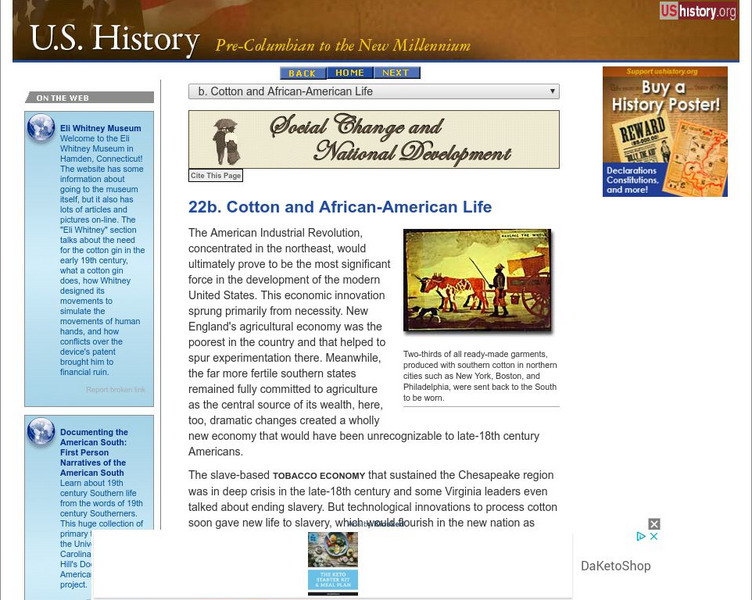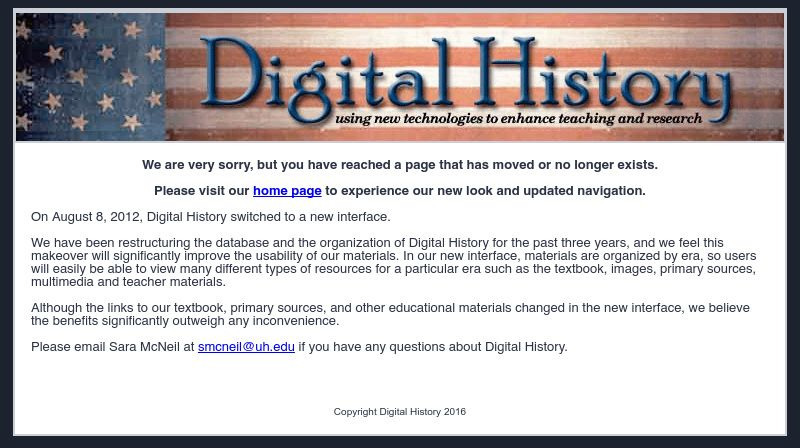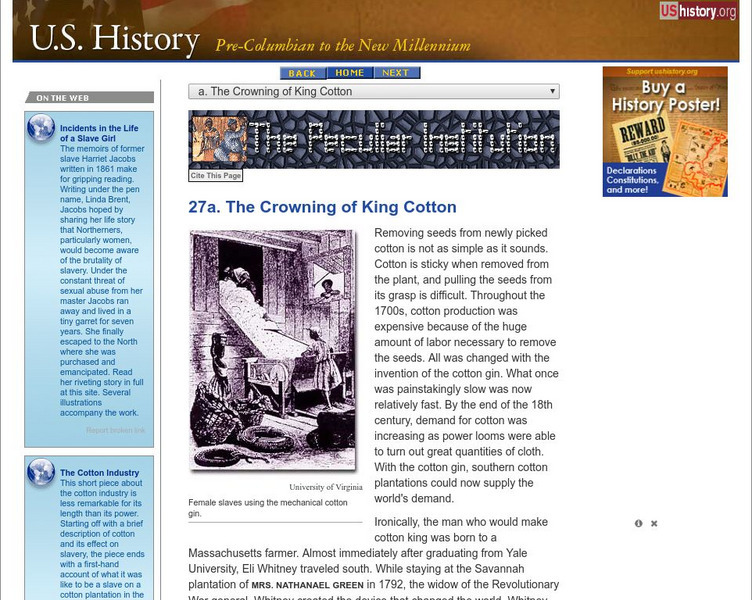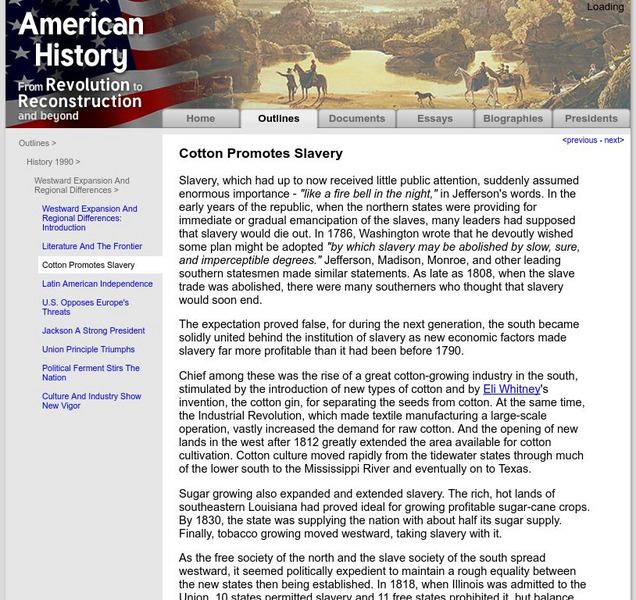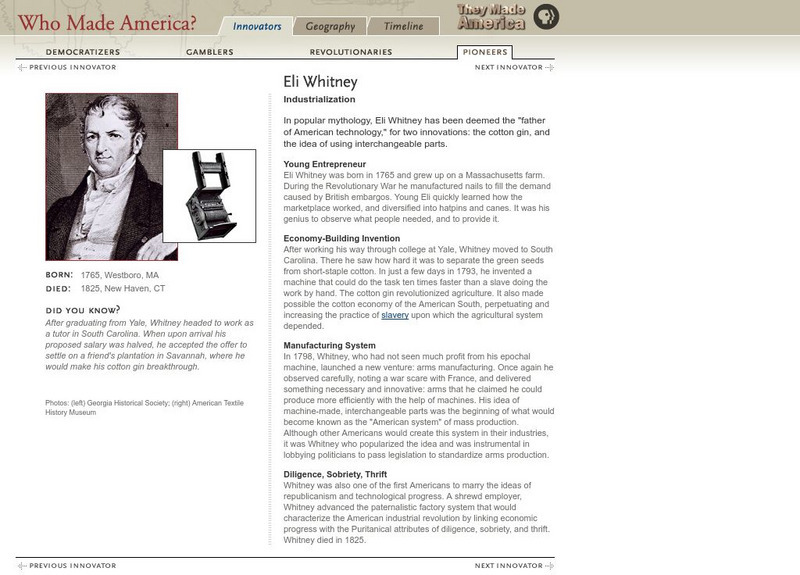Hi, what do you want to do?
Curated OER
Graphing and Demography: The Domestic Slave Trade
Students create graphs or charts based on the data a narrative imbedded in this plan. They make them either by hand or by using Excel or a similar database program. This lesson utilizes technology in a meaningful way.
Curated OER
Mixing Races in New Orleans
Students discuss the changes in the legal, social, and political status of African Americans and those of mixed ethnicity after reading the narrative, Haitian Immigration: Eighteenth and Nineteenth Centuries.
Curated OER
Trusting Statistics Lesson Plan
Students read a section of the Runaway Journey narrative and conduct a survey. They use survey statistics to question their validity and decide why a respondent might not answer truthfully.
Curated OER
Little America in Liberia
Students study the history of Liberia prior to and after the influx of immigrants of African Americans. They investigate the cultural differences between the African Americans and newly-arrived Liberians.
Curated OER
Differences in Location Lesson Plan: Treatment of Early African Americans
Students reach The Domestic Slave Trade, then examine the differences between the people enslaved in North America as opposed to those in Brazil.
Curated OER
Voluntary Movement or Not? Africian-American Movement to the West
Ninth graders, in groups, determine reasons for African-American migration to the west
Curated OER
The Underground Railroad
In this United States history worksheet, students utilize a word bank of 10 terms or phrases to answer 10 fill in the blank questions about the Underground Railroad. A short answer question is included as well.
Curated OER
The Industrial Revolution
Eighth graders examine the time period of the Industrial revolution in American history. In this American History lesson, 8th graders read the chapter on this time period. Students create a presentation on this time period to...
Digital Public Library of America
Dpla: Cotton Gin and the Expansion of Slavery
The sources in this primary set document the invention of the cotton gin and the expansion of slavery. Includes teaching guide.
Independence Hall Association
U.s. History: Cotton and African American Life
But for the invention of the cotton gin, slavery perhaps would have died out in the United States in the early 19th century. Read about why technological advances caused the spread of slavery in the South and read about how slaves clung...
TED Talks
Ted: Ted Ed: How Inventions Change History (For Better and for Worse)
A brief video that describes the unintended consequence of Eli Whitney's cotton gin. [5:14] Followed by a quiz and a list of additional resources to explore.
Digital History
Digital History: Pre Civil War South
A comprehensive look at the economy of the South and the changes brought by the cotton gin. Read through five pages that discuss the economy, the tradition of the plantation, and the sectionalism that arises in this time period.
University of Groningen
American History: Outlines: Extension of Slavery
Outline on the extension of slavery and U.S. westward expansion, touching on the development of the cotton gin, Northwest Ordinance and Missouri Compromise.
Independence Hall Association
U.s. History: The Crowning of King Cotton
Read how an invention made it possible to increase the amount of cotton available for export, thus leading to an increase in the number of acres planted in cotton, and resulting in the need for more and more slaves. Before the invention...
University of Groningen
American History: Outlines: Cotton Promotes Slavery
A brief history of how the economic growth of the South became dependent on the work of slaves and how this solidified the unity of the southern states. Links throughout the text will take to you sites containing relevant information.
US National Archives
Our Documents: A National Initiative on American History, Civics, and Service
Our Documents is home to one hundred milestone documents that influenced that course of American history and American democracy. Includes full-page scans of each document, transcriptions, background information on their significance, and...
PBS
Pbs Who Made America? Eli Whitney
In popular mythology, Eli Whitney has been deemed the "father of American technology," for two innovations: the cotton gin, and the idea of using interchangeable parts.
Cornell University
Cornell University: Library: I Will Be Heard: A Slave's Life
A brief look at how slavery in America was tied to the crops grown in the South. See how the need for skilled workers was decreased and the use of unskilled slaves increased with the introduction of the cotton gin.
A&E Television
History.com: Black History Milestones
A detailed account of the history of African Americans is presented in this article. Divided by main topics or periods of time, the coming of slavery to America is the first focus. Followed by plantation life and escapes to freedom and...
PBS
Wnet: Thirteen: Freedom: A History of Us: Wake Up, America!
This resource covers the changing of America due to the Industrial Revolution which brought in not only new technology but also opened the door to reform movements. From the series by Joy Hakim, "A History of Us." Includes a teacher's...
Independence Hall Association
U.s. History: The Peculiar Institution
A very brief look at the "Peculiar Institution" of slavery in the South before the Civil War. Read about how slavery became so entrenced and why it drove a wedge between the North and South.














